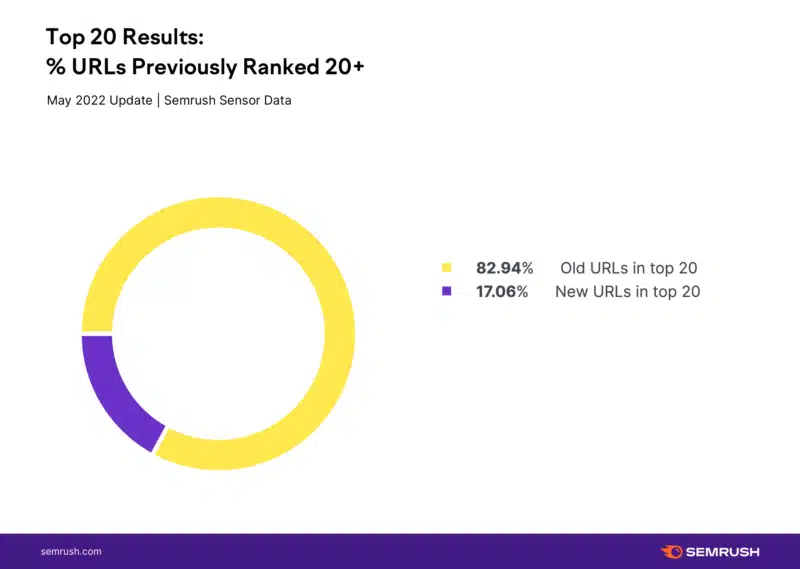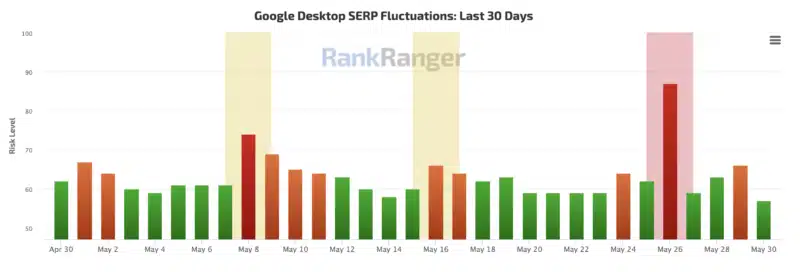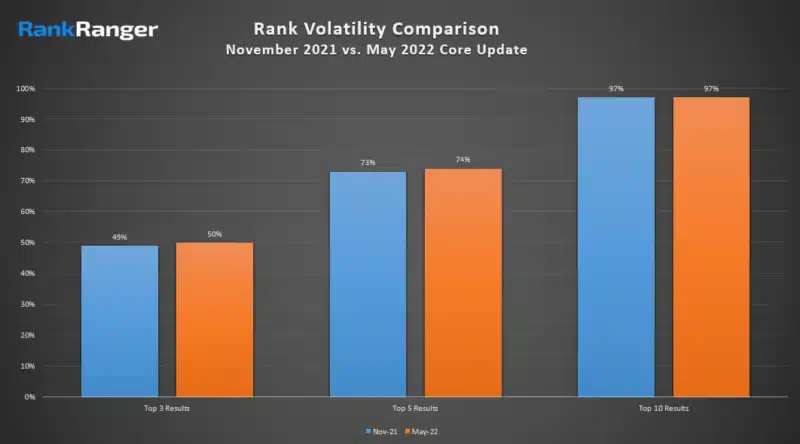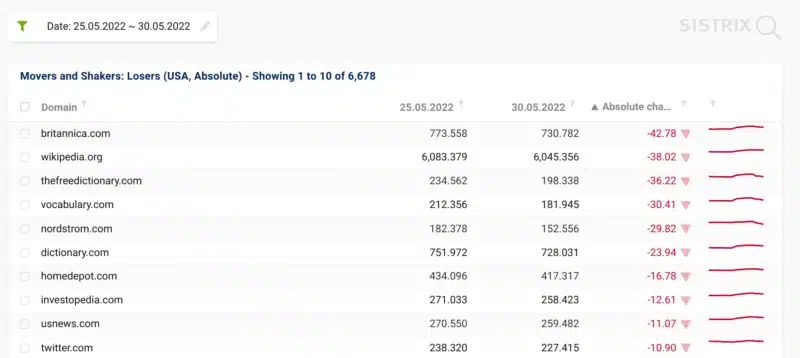Google’s May 2022 core update was significant and hit fast
The data is in early from the tracking tools and here is what these tools are showing with the latest Google algorithm update.
On May 25, Google began rolling out its first broad core algorithm update this year – the May 2022 core update. The impact of this update was felt super quickly, within 24 hours of the announcement, so we feel it is now safe to report on the impact of this May 2022 core update.
Historically, we have waited longer to report on the impact of these core updates. But after writing several of these core update impact stories, the vast majority of the impact is generally realized within the first few days of the update (although there are always outliers).
Data providers on the May 2022 core update
Generally, the data providers (which have consistently been Semrush and RankRanger for these reports) have agreed on how volatile these updates have been. But with this update, they seem to disagree. At least until you dig into the data.
Semrush. Semrush data showed that the May 2022 core update hit pretty quickly after the announcement. In terms of its volatility tracker, as shown below (or you can view live at the Semrush Sensor tool).

In terms of the speed for these core updates to roll out, “This is already the third core update in a row where the initial roll-out saw a very short burst of initial rank volatility,” Mordy Oberstein, Semrush Communication Advisor, told us. He added that “this seems to be a new pattern” with the rollout of these core updates.
When you compare the May 2022 core update to the November 2021 core update, at first glance, it seems the May update was less volatile than the November update. This is with the exception of the real estate niche, “which seemed to undergo a significant shakeup,” the company shared.
This chart compares the May 2022 core update to the November 2021 core update by vertical:

The issue is that the average level of volatility prior to the May 2022 core update was higher than that of the volatility seen before the November 2021 core update, Semrush explained. In fact, Semrush said the overall increase in rank volatility compare to the baseline level of before the core update volatility was 19% less during the initial release of the May 2022 update compared to the November 2021 core update on desktop, and 24% on mobile.
So if you plot the peak volatility, you see things differently:

So this might mean that even with Semrush data, May 2022 might have been more volatile than the November 2021 core update? Again, it is all about how you process and interpret the data.
This chart below shows you that 17% of the new top 20 ranked results in Google after the May 2022 core update came from position 20 or beyond, which is not far off from the previous November 2021 core update:

RankRanger. The RankRanger team also analyzed the Google search results after this May 2022 core update rollout and you can see how quickly their tool also picked it up (you can also see this live at the Rank Risk Index tool). RankRanger said the May 2022 core update was “significant.”

The folks at RankRanger did compare the May 2022 core update to the November 2021 core update for us as well. RankRanger found that in its data the May 2022 update’s average position changes were higher than the November 2021 update.

When you dive in and compare by position, the volatility does seem more similar across positions:

Retail seemed to be most impacted according to RankRanger data, as you can see by these charts below:

SISTRIX. SISTRIX, another data provider that tracks the changes in the Google search results, sent their top 20 winners and losers for the May 2022 core update. These are U.S.-based sites from Sistrix’s data set.


Sistrix added “In our example, we saw that the visibility of the domain was 25.84 points on Thursday, then increased to 27.95 on Friday and as of now (Monday 30th May 08:55) the Visibility Index is 31.98.”
More on the May 2022 core update
The SEO community. The May 2022 core update seems much more significant than the November 2021 core update. Unlike the November 2021 core update, where the timing for that update was not the best, i.e. right during the busiest online shopping season, this update was scheduled a lot better for retailers. I covered the community reaction in one blog post on Search Engine Roundtable early on. It includes some of the early chatter, ranking charts and social shares from some SEOs.
On Twitter you can find plenty of examples of SEOs sharing charts from their clients – mostly showing winners but also showing losers – with this update.
What to do if you are hit. Google has given advice on what to consider if you are negatively impacted by a core update in the past. There aren’t specific actions to take to recover, and in fact, a negative rankings impact may not signal anything is wrong with your pages. However, Google has offered a list of questions to consider if your site is hit by a core update. Google did say you can see a bit of a recovery between core updates but the biggest change you would see would be after another core update.
Why we care. It is often hard to isolate what you need to do to reverse any algorithmic hit your site may have seen. When it comes to Google core updates, it is even harder to do so. What this data and previous experience and advice has shown us is that these core updates are broad, wide and cover a lot of overall quality issues. The data above has reinforced this to be true. So, if your site was hit by a core update, it is often recommended to step back from it all, take a wider view of your overall website and see what you can do to improve the site overall.
Hopefully, your company and your clients did well with this update.
More on Google updates
You can read more of our coverage in Search Engine Land’s Google Algorithm Updates history.
Related stories
New on Search Engine Land